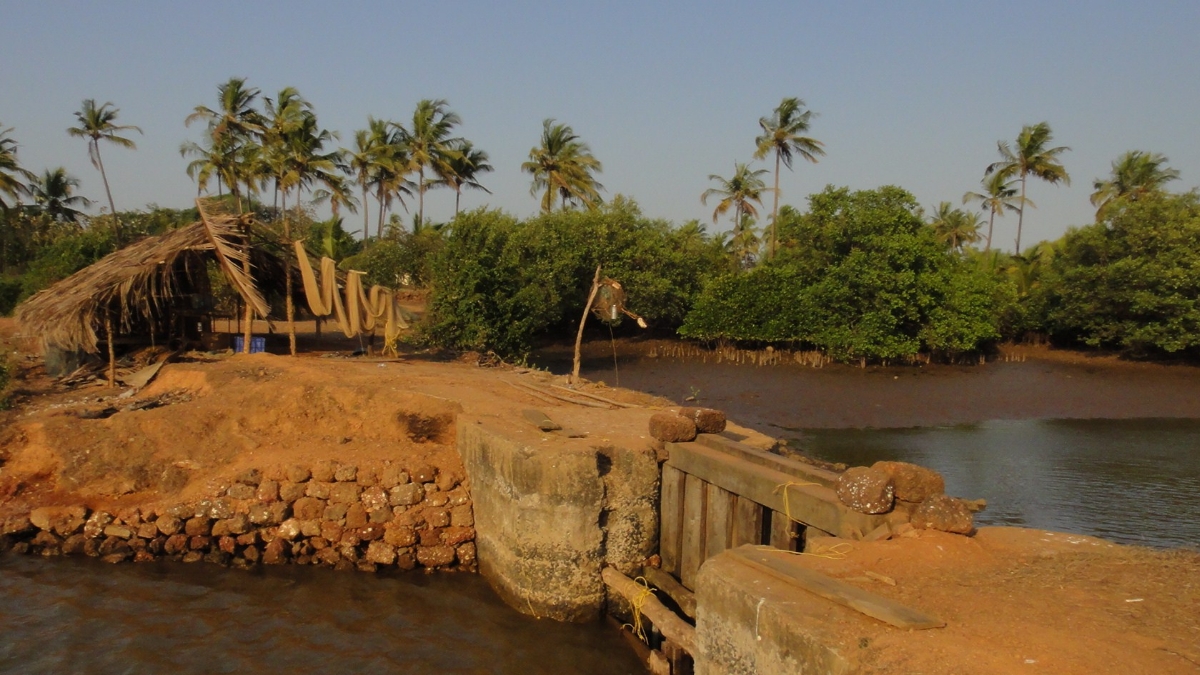Adventurous, exciting, memorable, relaxing, rejuvenating – Goa can be anything you want from your ideal vacation. However, besides what you see and what you know about Goa, India’s favorite beach destination has more to it than what meets the eye. And hidden in its greenery and beyond the waves are little secrets of ancient treasure. One such best-kept secret (not so much of a secret anymore) is the Chorao Island Goa. Replete with antiquated churches, colonial homes, and cemeteries, the island is steeped in history and still emanates the old vibes.
Reaching Chorao Island
Located 5 Km northwards from the capital city of Panjim, the Chorao Island is a historic Portuguese settlement along the Mandovi River. You have to take a ferry from Ribandar to reach the island. The ferries are well equipped to haul a car and other smaller vehicles. The island is also connected to the nearby towns of Mapusa at 10 Km and Vasco at 50 Km. So, if you are traveling from any town or village within Goa, you can hire a car to reach Chorao.
History of the island
Chorao Island is the largest (in land area) among all the 17 islands of Goa. As much as the island is connected to history, it also has a mythological reference to its existence. It is said that this piece of land emerged from under the water when Yashoda, Krishna’s mother threw away a handful of diamonds into the sea. And hence, the island was named Chudamani (precious stone) in Sanskrit. Later when the Portuguese noblemen landed here, they named it to suit their nobility and lifestyle and called it the Ilha Dos Fidalgos or the Island of Noblemen. Further to suit their linguistic ability, they transformed the name to Chorao Goa.
Exploring Chorao Island
The highlight of Chorao is its widespread bird sanctuary, which is the largest in Goa. The Salim Ali Bird Sanctuary spreads across 178 hectares of natural land. Surrounded by dense mangroves from the inlets of the sea, this natural reserve is home to numerous species of birds like kingfishers, coots, egrets, pintails and more. You can also spot some random wild animals and Goan crocodiles along the swamps. The best way to tour the sanctuary is on a canoe or a local dingy.
Take a ride through the countryside in a car rental in Goa. As you drive through the palm-lined roads of the Charao village with its clusters of mud houses and thatched roofs, you could feel as if time has stopped here, centuries ago. The distinctive Portuguese architecture with white-washed churches and the colorful homes with intricate woodwork speak of the island’s rich heritage. And, all this amidst sun-kissed greenery, makes this island look like right out of a picture post-card.

The quaintness of the Chorao Island Goa also extends to its temples and churches. Majority of the churches on this island date back to the 16th century, when Portuguese arrived here and established places of worship for their people. The most prominent one of all Catholic Churches is, St. Bartholomew’s Church. Built in 1569, this church reflects a classic Neo-Roman architectural style with multiple spires and subdued façade, but still emanates an aura of old grandeur.
Another noteworthy place of worship in Chorao Goa is the ‘Our Lady of Grace church’ with its spotless white façade with a blue bell tower. For those who want to explore the unknown, there is also a small village chapel, which is not named but is frequented by the local villagers.
There are also a few ancient Hindu temples on the other side of the island. One of the most famous ones being Saptakoteshwar Temple at Narve.
With a strong influence of the ancient Saraswat Brahmins to Portuguese noblemen, the Chorao Islands Goa still holds onto its heritage and makes this tiny settlement a must-visit place!


